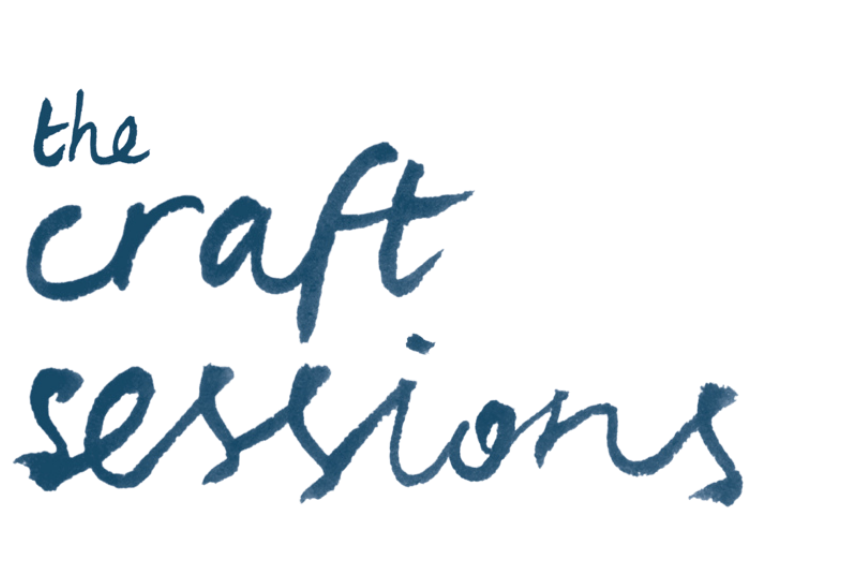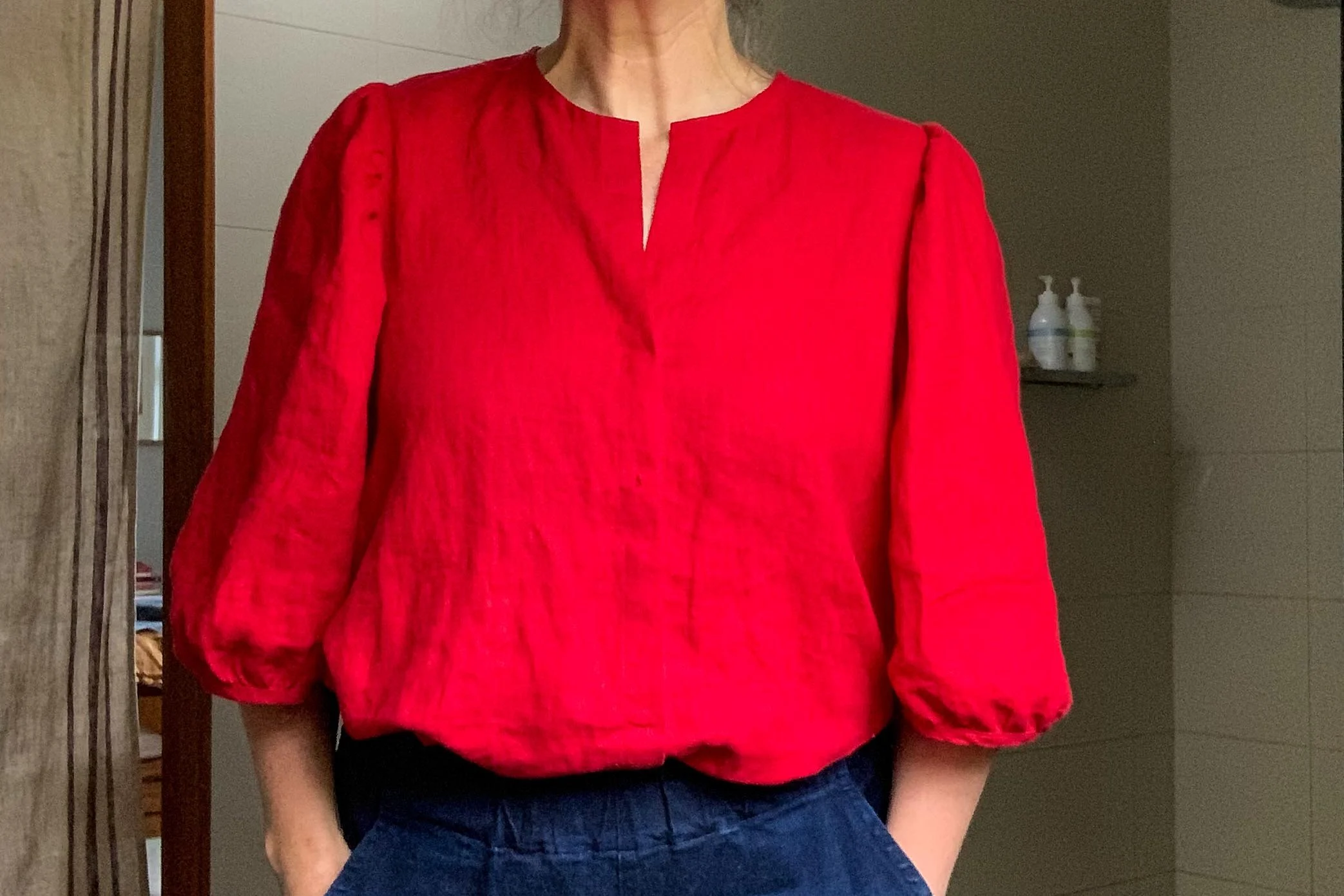I learnt to sew when I was 4 or 5 with my mum. The first thing I remember making was a tiny green and white bikini for my doll.
Mum allowed me to draw what I wanted to make and then helped me figure out how to do it. Learning like this was a privilege. I didn’t know to be scared or worried that I couldn’t do something - because she always told me that we could work it out. The confidence I had was a direct result of her teaching and is one of the key skills I believe we lack as a society when it comes to thinking about whether we can make things.
I wanted to talk skills today because I had another one of those conversations over the weekend where someone told me a story about how they had once tried to make a thing - but that that thing had not worked. That it was wonky and a little lopsided. They used this thing as evidence of their personal lack of capacity. That they couldn’t do this particular kind of making.
I tried, over the bubbles in my hand and the music in the room, to suggest that their story about their capacity was untrue. That their story was limited by what they were being told - by what our culture tells us - it takes to make something beautiful.
The idea that they weren’t capable of anything more than a lopsided piece of knitting is simply untrue. They have the capacity, given the right circumstances, to learn to knit.
Cause making is skills. Just skills. And we have all learnt so very many skills in our lifetimes.
BUT the part of the trick to learning skills is to remember that we can’t learn them all at once.
Skills are built up of other skills.
Learning to ride a bike is made up of skills. We need to learn to steer and push the pedals and balance and brake. And each of these skills is made up of other skills.
To learn to ride a bike, we first had to learn how to balance. And before we learnt to balance on our bikes we had to learn to balance on our feet ie. to stand.
Importantly we all come to making a thing with a different set of pre-skills. Some of us already know how to balance on our feet. Others of us know how to balance on the bike. Whereas some of us have simply been doing a lot of walking along logs in the park over the road from our house - using them like balance beams. Each of us starts from a different place.
But still learning to make something is just made up of skills. Skills that take a little time and practice -and sometimes it helps to have some good instruction - but they are all learnable. For all of us.
So I thought I’d lay out what I believe are the four skills, or actually skillsets, we need to build within ourselves to make a thing.
My first big piece of hand-quilting practice. I tried many techniques to figure out how much the yarn warped the fabric - and how best to avoid it.
1. Physical Skills
Like the bike example much of our making involves physical skills. To state the absolute obvious, we make with our hands. Our hands need to be coordinated. They need to know how to grip and pinch and manipulate fabric or tools. Where do we put pressure, with what fingers and how much pressure. And when do we release it.
At the moment I am sewing the binding of my quilt. It’s a job I love as it just flows. But it only flows after making many quilts. Initially it was awkward. I had to think about it. And it was slow. But years and many quilts later, my fingers know what to do.
There are so many non-making comparisons I can give here, but to use a making example, the reason knitting needles feel awkward initially is because we don’t have the physical skills we need - yet. Just like when we were learning to write our names our letters were wobbly and large and loopy. So is our knitting. With practice, if you were someone who actually did practice your handwriting, your writing would have got neater. You would have gained pen control.
Now before you say something like “I have terrible handwriting” I want to share a wee anecdote about my friend SDLH, the person with the most beautiful handwriting I have seen. He decided in high school that he didn’t like how messy his writing was and that he was not going to “have crap handwriting anymore”. And so he fixed it. He practiced. A lot. With intention and a goal. And it took time. But it is seriously lovely. So lovely in fact, if you could cuddle it, you would.
And this is the case with our making. We learn our physical skills over time with practice and time and consideration.
2. Technical Skills
Then there are the technical skills we need to make the thing we want to make. What part of the pattern is the sleeve. What is gauge in a knitting pattern. How do I thread my machine.
This can be tricky in this world of information overload. There is actually a glut of information about how to start knitting or to do some tricky knitting stitch. Or to bind a seam or do a welt pocket. Or to trace and cut out a pattern. The trick is to find someone who shares the information in a way that suits your learning style. Because we all learn differently.
And to remember that building our skills one at a time is a good way of building our confidence which takes us on to the next set of skills.
If you want to learn to sew - years ago I wrote a series of blog posts called Simple Sewing 101 and the key steps shared in that series still apply today. It basically has you learning to sew clothes by making a series of patterns - each of which teach you one extra skill each project.
One of my first attempts at combining colours to make patchwork I thought was beautiful. I didn’t like this outcome but staring at it over many days helped me understand why. I learnt something that helped me make later things I really wanted to make.
3. Emotional Skills
Confidence is an emotional skill. As is learning to deal with mistakes. As is managing frustration, boredom, and uncertainty. And bloody perfectionism.
Our making helps us learn these skills, but it also benefits from the emotional skills we bring to the table from other parts of our lives. Our emotional pre-skills if you will.
If we make a mistake mean something (or make it meaningful) we are more likely to feel that that mistake means something about our capacity. This in turn impacts our thinking - and we are more likely to give up or not be considered in our approach.
However, if we make our mistakes mean less, and accept that they are simply part of the process whether we are beginners or have been making for many years, then we tend to have a more stress free and joyful making practice.
4. Aesthetic or Design Skills
In order to develop the skills we need, to make things look like we want them to look, we need to understand what it is that we really love. And how those effects have been created.
These skills are subjective. What I believe is beautiful is not the same as what you believe is beautiful.
So in order to make beautiful things that we love, we personally need to develop the skills of colour and design and negative space and form. No-one can do it for us. Because those skills need to be aligned with what we love as there is no one right way to make something look beautiful.
And we are making for us. So that we love it. So understanding what we love is a key part in developing these skills. This took me years and years - as you can see from the photo above - but it was such a fun learning process along the way.
Like other skills these take time and can be improved with deliberate practice. I wrote about this in a piece called Study The Masters and also in this series about Patchwork.
I made that one above so that later, after many more attempts I could make this. Building skill upon skill. “Making bad art to make good art.”
It is important to note that we don’t develop our skills evenly or consistently. And we may not know where we are up to, or how much we have to learn, especially at the start. It’s hard to know what skills we need to learn to ride a bike if we haven’t seen a bike before. And the same goes for making a quilt. With some things we will underestimate how hard it is, and for others we will underestimate. And that is OK. We can sit in the unknowing, not panic, and put one foot in front of the other.
Now while I was lucky to learn my physical and technical skills for much of the craft I do when I was very small, there were many skills I have only learnt as an adult. Like knitting. Knitting wasn’t something I learnt till I was nearly 30 - and it took me time to get as competent as I hoped to be. In the meantime I was still making things I thought were beautiful, but it was a little hit and miss as I was still developing my skills.
But here’s the thing. When I started knitting my pre-skill game was fairly strong. I had some physical skills - maybe better hand coordination than the average human because of all the sewing I’d done. I didn’t have that much in the way of technical knitting skills BUT my emotional skills were really strong. I had confidence in my ability to figure it out. I wasn’t worried about mistakes as I knew they were inevitable and probably fixable. And I didn’t fear the uncertainty of new projects. That said my design/aesthetic knitting skills took some time to build. I needed to develop ‘material intelligence’ about ‘yarn and sticks’ and that took time. Which impacted the outcomes I got. Some were good because I accidentally chose an appropriate yarn for the project but often…. well hmm. Let’s just say I got better.
So especially if you are new to making - be kind to yourself about your pre-skills or lack thereof. You can still develop them. It just might take a moment longer than the person sitting to your left in the workshop. And that is OK.
And that is what I wanted to say to my friend. If you are interested in making a thing, you are capable of learning the skills. We all are. I could easily show him how to not knit wonkily if he had the time and the desire. Cause that is all it takes.
What do you think? Do you think I’ve missed any key skills? Do you like my categorisations? And what have you learnt about making things you believe are beautiful.
Felicia x






